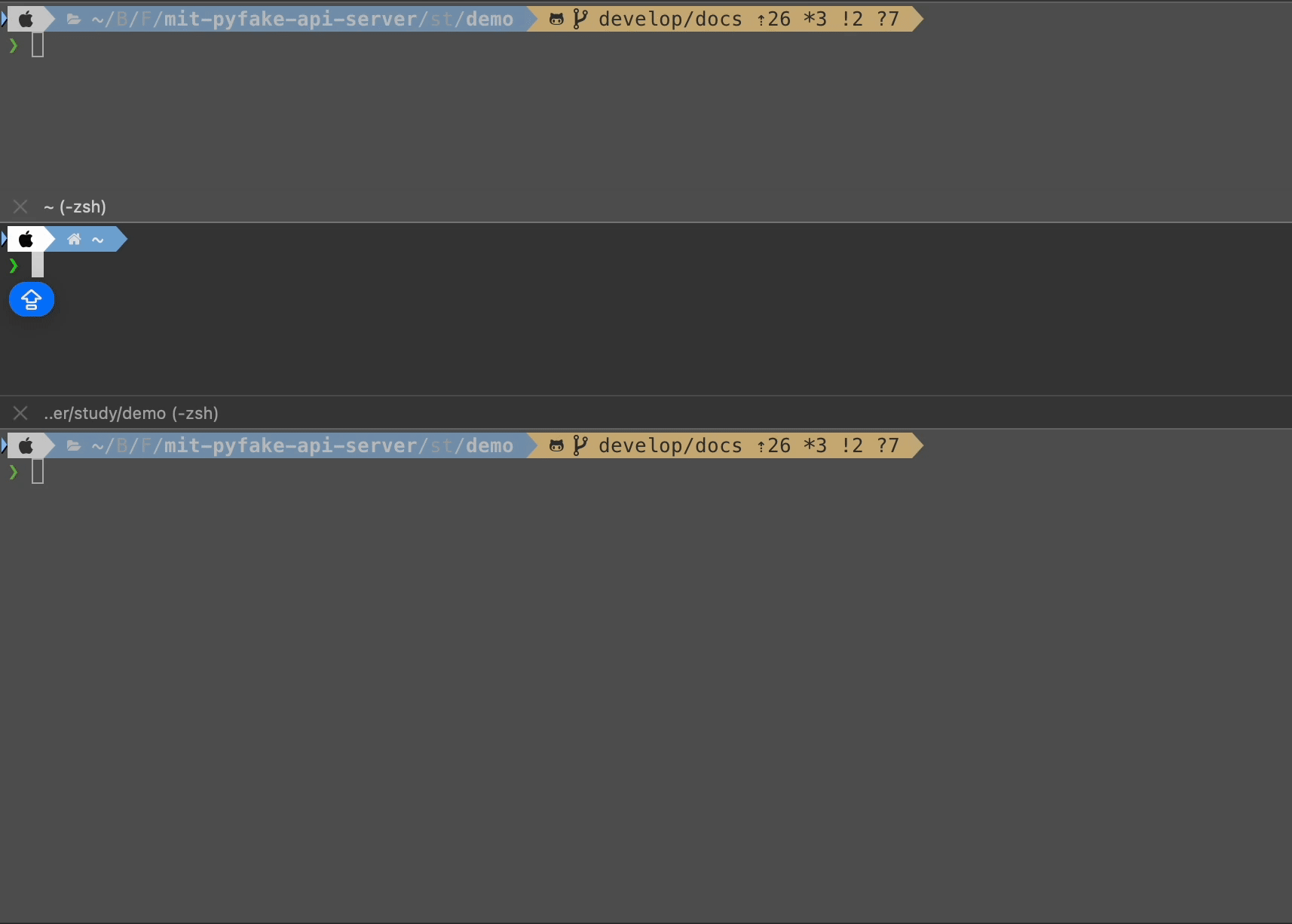
Security News
Meet Socket at Black Hat and DEF CON 2025 in Las Vegas
Meet Socket at Black Hat & DEF CON 2025 for 1:1s, insider security talks at Allegiant Stadium, and a private dinner with top minds in software supply chain security.
🕸🤖👺 A Python tool to fake API server, e.g., RESTful API server, easily and humanly without any coding.

PyFake-API-Server is a Python tool to fake API server easily and humanly without any coding.
[!NOTE] It names PyMock-API before version 0.2.0.
Overview | Python versions support | Quickly Start | Documentation
Do you ever have experience about needing to set up a very simple application and write some APIs with hardcode response again and again for developing Font-End site? PyFake-API-Server provides a command line tool to let developers could quickly and easily set up application to mock APIs with configuration only.
The code base of PyFake-API-Server to set up an application still depends on third party Python package, i.e., Flask, FastAPI, etc. So the Python versions it supports also be affected by them, e.g., Flask only supports Python version 3.9 up currently. So PyFake-API-Server also only supports version Python 3.9 up.
Here section would lead you quickly start to set up your first one application by PyFake-API-Server for mocking API server easily.
In basically, it has 3 steps: install the package, configure settings about the APIs for mocking and run command.
First of all, we need to install the command line tool and the way to install is same as installing Python package by pip.
>>> pip install fake-api-server
If the runtime environment has installed some Python web framework, e.g., Flask, you also could install PyFake-API-Server with one specific option as following:
>>> pip install "fake-api-server[flask]"
Then it would only install the lowest Python dependencies you need.
After you done above step, please make sure the command line tool feature should work finely by below command:
>>> fake --help
Note
Please take a look at option --app-type (this option is in subcommand mock run) of the command line tool. Its option value could be
auto,flaskorfastapi. It means that PyFake-API-Server only supports 2 Python web frameworks: Flask and FastAPI.
Now, we have the command line tool. Let's configure the settings it needs to set up application to mock API.
The configuration format of PyFake-API-Server to use is YAML. So let's write below settings in YAML file:
mocked_apis:
foo:
url: '/foo'
http:
request:
method: 'GET'
response:
strategy: string
value: 'This is Foo API.'
Now, both of the command line tool and configuration have been already. So let's try to run the command to set up application!
>>> fake rest-server run -c <your configuration path>
You would see some log messages in terminal and that is the log of web server by one specific Python web framework.
And you could test the API by curl:
>>> curl http://127.0.0.1:9672/foo
"This is Foo home API."%
The documentation contains more details, demonstrations and anything you need about PyFake-API-Server.
PyFake-API-Server follows coding styles black and PyLint to control code quality.
PyFake-API-Server still a young open source which keep growing. Here's its download state:
FAQs
🕸🤖👺 A Python tool to fake API server, e.g., RESTful API server, easily and humanly without any coding.
We found that fake-api-server demonstrated a healthy version release cadence and project activity because the last version was released less than a year ago. It has 1 open source maintainer collaborating on the project.
Did you know?

Socket for GitHub automatically highlights issues in each pull request and monitors the health of all your open source dependencies. Discover the contents of your packages and block harmful activity before you install or update your dependencies.

Security News
Meet Socket at Black Hat & DEF CON 2025 for 1:1s, insider security talks at Allegiant Stadium, and a private dinner with top minds in software supply chain security.

Security News
CAI is a new open source AI framework that automates penetration testing tasks like scanning and exploitation up to 3,600× faster than humans.

Security News
Deno 2.4 brings back bundling, improves dependency updates and telemetry, and makes the runtime more practical for real-world JavaScript projects.